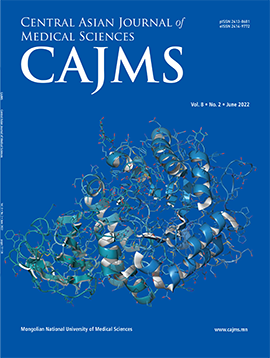Chemical Composition and Antioxidant Activity of the Poll Gland Secretions of the Bactrian Camel (Camelus bactrianus)
DOI:
https://doi.org/10.24079/cajms.2017.06.005Keywords:
Camels, SDS-PAGE, Minerals, 2, 2-diphenyl-1-picrylhydrazylAbstract
Objectives: To determine chemical composition and antioxidant activity of poll gland secretions. Methods: Physical and chemical constituents, such as moisture and ash content, were determined using standard methods, crude fat was determined using the Soxhlet method, and organic composition was analyzed using GC-MS. Macro- and micro- element contents were determined using ICP-OES. Protein concentration was determined using the Bradford assay, and protein profiles were determined using SDS-PAGE. Antioxidant activity was determined using the DPPH free-radical scavenging technique. Results: Camel poll gland secretions contained 23 minerals. Potassium (89030 mg/kg) was most predominant, followed by calcium (12955 mg/kg), iron (8546 g/kg), aluminum (6105 mg/kg), magnesium (4563 mg/kg), sodium (2452 mg/kg), and zinc (14198 mg/kg). Total protein content was 11.7%. SDS-PAGE analysis of poll gland secretions revealed the presence of three different protein bands with the molecular weights of 35kDa, 68kDa and 130.5kDa. 12 organic compounds were determined by GC-MS in the poll gland secretions. Antioxidant activity of poll gland secretions was IC 50-176.2 µg/ ml. Conclusion: Proteins with the molecular weights of 35kDa, 68kDa, and 130.5kDa were determined in poll gland secretions, and they displayed potent antioxidant activity.
Downloads
168
Downloads
Published
How to Cite
Issue
Section
License
Copyright (c) 2017 Mongolian National University of Medical Sciences

This work is licensed under a Creative Commons Attribution-NonCommercial 4.0 International License.




